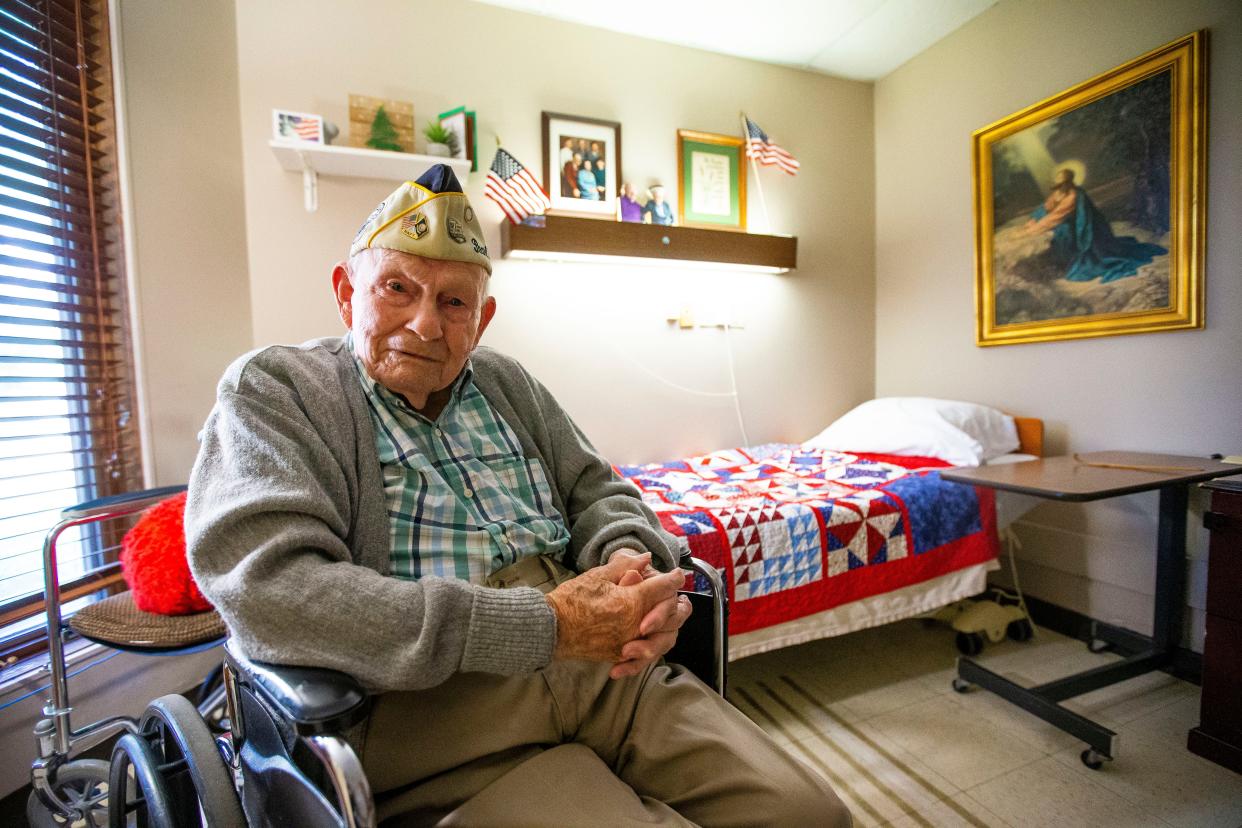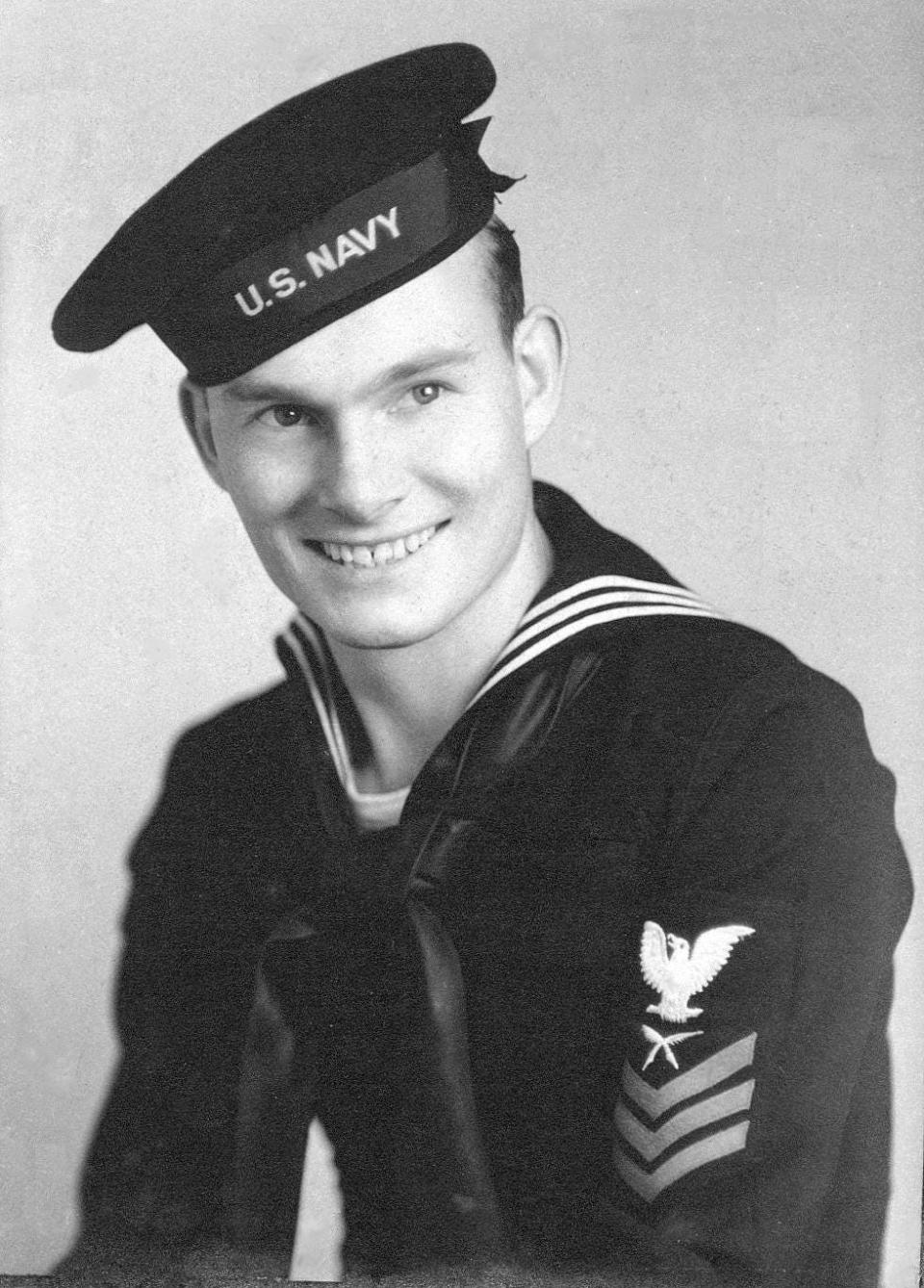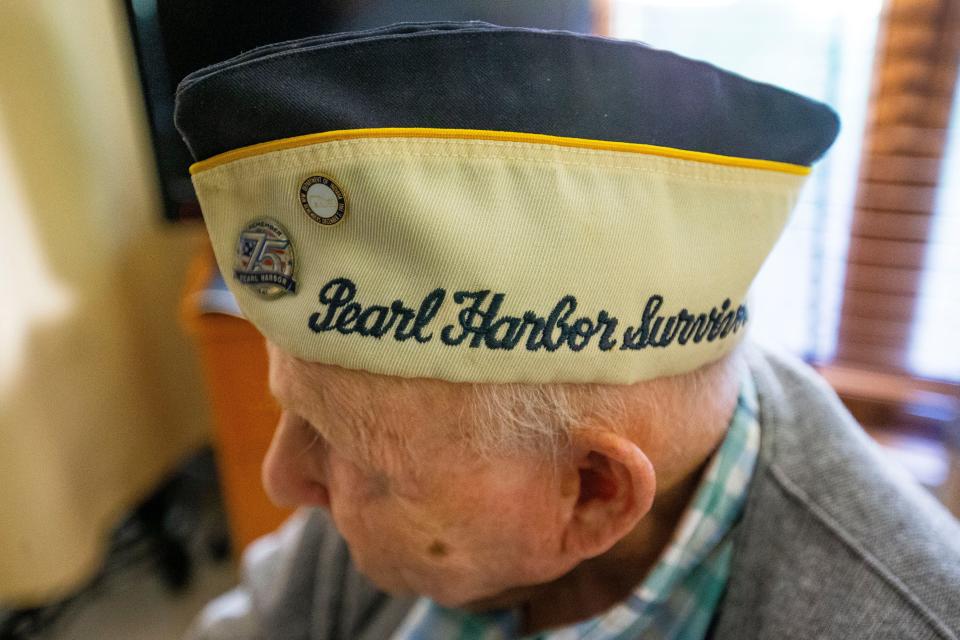Pearl Harbor survivor in Culver is a symbol of history at the 80th anniversary of attack

Jim DeWitt was serving in the Navy in 1941 and still recalls the warnings about an impending attack on Pearl Harbor.
He now wishes there had been more disclosure about what the government knew of the growing military build-up against the United States.
But as the veterans who served at Pearl Harbor age, stories about the attack are coming from fewer eyewitnesses. And DeWitt, of Culver, is among the last-known Indiana survivors of the Japanese attack.
DeWitt, 100, is expected to attend a memorial service Tuesday at Culver Academies to commemorate the 80th anniversary of the tragedy.
He will represent the service men and women who endured the waves of Japanese planes and submarines that took the U.S. naval ships by surprise the morning of Dec. 7, 1941. He also signifies a shrinking group of people who can relay first-hand details of the event that thrust America into World War II.
More on Pearl Harbor: How President Roosevelt edited his Pearl Harbor 'a date which will live in infamy' speech
About 2,400 Americans lost their lives the day Japan tried to eliminate the U.S. Pacific Fleet’s base at Pearl Harbor in Hawaii. DeWitt was aboard the USS Antares, a ship that was returning from a month-long trip when it spotted a periscope near the harbor entrance.
The position was reported, and DeWitt said the USS Ward, a destroyer, came in and took care of the suspected submarine.
Several hours later, with hula music playing, DeWitt said in a 2005 South Bend Tribune story, the Japanese attacked Pearl Harbor.
"The radio was still playing Hawaiian music when it was interrupted by: 'This is an air raid. Take cover,' repeated over and over," DeWitt recalled at the time.
There were flames, smoke, explosions and the noise of airplanes and guns everywhere, but his slow ship was not a primary target.
"We were strafed twice," DeWitt said. "The topside was hit in a few places and several bombs and numerous shell fragments fell in close to us."
Fact Check: Armed citizens are not what stopped Japan from invading after Pearl Harbor
While he survived the attack, DeWitt lost a friend who was on another ship.
Later in the war, DeWitt was stationed at an office in Honolulu for two years. He was then sent to learn shorthand at the Fleet School in San Diego.
"I already knew it," he said in 2005, "but it was a way to get me back to the States."
Finally, in December 1945, he got his orders to come home.

James Laud, District 5 director of the Sons and Daughters of Pearl Harbor Survivors Inc., said his organization doesn't want the event to be forgotten and "is devoted to make sure the message still gets out."
"It's tough," Laud said. "The torch has passed, and we have to do what we can. We watch clips of the older guys, and we have to try and share their stories. It's not the same, but we try."
The group Laud represents is made up of 500 members in seven states. While it originally was a group of direct representation from the Pearl Harbor attack, he said they now accept associate memberships.
The memorial service, held by the Sons and Daughters of Pearl Harbor Survivors, will be 5 p.m. Tuesday in the Memorial Chapel of Culver Academies, 1300 Academy Road, Culver.
Story continues below the gallery.
Pearl Harbor facts
Here are facts from the attack on Pearl Harbor from USA Today and history.com:
• The first wave of the attack involved 180 Japanese aircraft, including torpedo planes, high-level bombers, dive bombers and fighters. It was followed by a second wave of similar size, but with more dive bombers and no torpedo planes.
• Japanese forces started the attack shortly before 8 a.m. Hawaiian time, when the initial wave of fighters struck.

• The attack destroyed six U.S. ships and 169 Navy and Army Air Corps planes.
• The Japanese losses included 29 aircraft, in addition to five midget submarines, and 129 attackers were killed and one taken prisoner.
• The Japanese opted not to launch a third wave of aircraft against and instead turned around and headed back across the ocean, in part because fuel was running low.
• The official death toll at Pearl Harbor was 2,403, according to USA TODAY, including 2,008 Navy personnel, 109 Marines, 218 Army service members and 68 civilians. Of the dead, 1,177 were from the USS Arizona, the wreckage of which now serves as the main memorial to the attack.
• It is believed that fewer than 100 Pearl Harbor survivors remain today.
Email South Bend Tribune reporter Greg Swiercz at gswiercz@gannett.com.
This article originally appeared on South Bend Tribune: Pearl Harbor survivor in Culver describes attack on 80th anniversary

